
As every shooter knows, any movements made just before or while pulling the trigger can materially affect accuracy. Jerking the trigger, anticipating recoil, smashing the trigger, and other bad trigger habits cause poor accuracy. The basic idea of the Mantis system is to provide feedback to the shooter for what they are doing when they pull the trigger. The device may be attached to virtually any gun (directly on a Picatinny rail, to a magazine floorplate, or to a shotgun barrel). It collects data and sends it to a smartphone or tablet application. There the Mantis displays what is going on when the trigger is being pulled. The charts and graphs are easy to use and understand.
Last November I wrote an article on the features of the Mantis Dry/Live Fire Training System (which you can read here). The article below is an update that profiles some of the more advanced features of the X10 model. We dive headlong into the rabbit hole of data and analysis provided by the X10. There are a ton of features packed into this little device, and the hole is deep and full of surprises.
MantisX offers four models ranging from $149.99 for the base model (the X), to $249.99 for the X10. All models give dry fire feedback as described above, and all work on rifles or handguns. All models have drills, coaching tips, historical tracking, and more. The X10 supports live fire as well as analysis for shotguns and archery (through separate free apps). The X10 also gives recoil analysis and holster draw analysis.
Recoil Analysis
Trigger control is critical to get the first round on a target, and it is important for all subsequent shots. Recoil management comes into play after that first round goes off. The Recoilmeter in the X10 application compares recoil patterns and recovery times. Feedback data includes recovery time, how many degrees of muzzle rise, how wide the recoil pattern is, and the left-to-right angle during recoil. It really quantifies what is happening as you try to control the recoil of the gun when it goes off. Results are displayed numerically and graphically, and for a given shot string, the average statistic is displayed.
At the range, I tried the Recoilmeter in three ways. First, I attached the X10 to a magazine floor plate for a Glock magazine and ran my G34. I experimented with a proper grip, a loose grip, and an unbalanced grip. The feedback was right there in the graphical results.

The next experiment was to compare average recoil statistics from one G34 to another. Both G34s are set up the same except one has a Griffin Armament Micro Carry Comp pistol compensator. This was the first time I had used the compensator. When switching between the two pistols it immediately seemed that less effort was required to control recoil, and this bore out in the data collected by the X10. Muzzle angle was less on the gun with the compensator.

The third thing I did with the Recoilmeter was to attach the X10 to the rail of my rifle. I wanted to see whether the recoil was greater or lesser when a suppressor was attached. The rifle was a .308 in the AR platform, and a B&T Industries Atlas bipod was used from a bench. The suppressor was an AAC SR7, which requires a specific muzzle device for attachment. In this case, a muzzle brake was used, so the comparison was muzzle brake versus suppressor. A better comparison would have been not using a muzzle device at all, but this thing is attached with RockSett and I didn’t want to have to boil the barrel to remove the brake. The results were interesting, but not too surprising. Recoil when using the suppressor was slightly less than with the brake alone. The difference was not large, but it was there. The shooter’s experience between suppressed and non-suppressed is vastly different however because of the concussive blast or lack thereof. This showed me just how much the noise of a rifle affects how I shoot. Staying relaxed and smooth is easier for me when shooting suppressed.
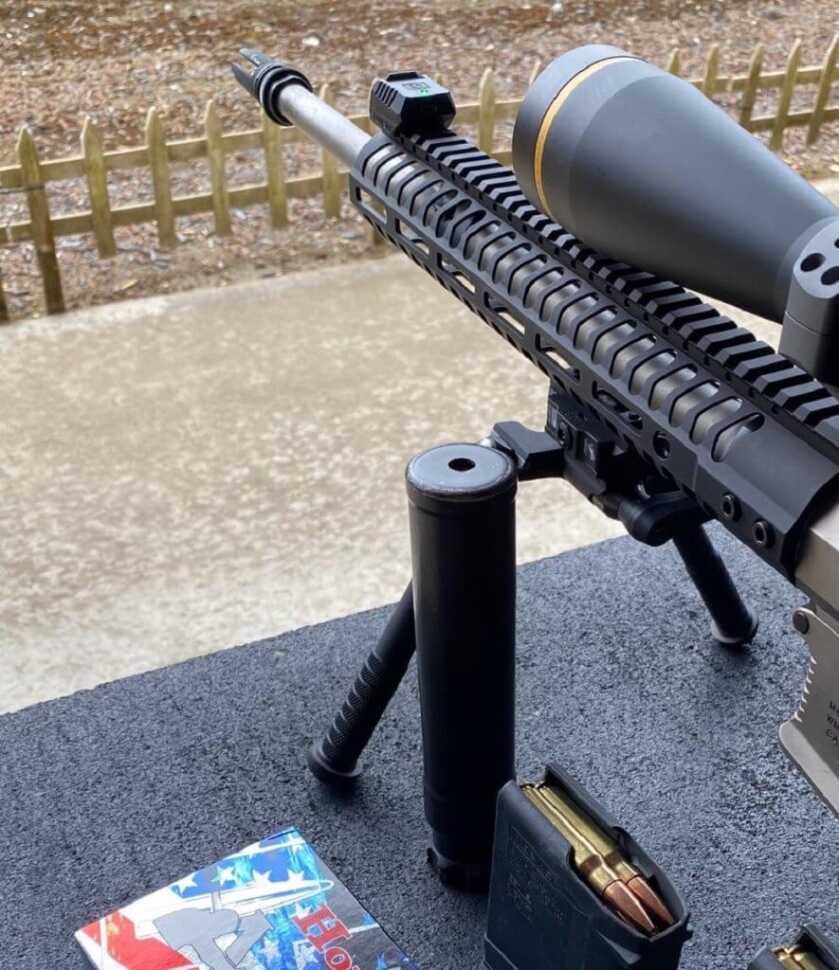
For as many guns and suppressors as I test and evaluate, the X10 will come in handy to make comparisons. If one gun seems like it has a stronger recoil impulse than another, I can now quantify it with the X10. Likewise, I can compare suppressors and have hard data to support a subjective impression. The Recoilmeter also will show how much ammunition selection affects recoil management.
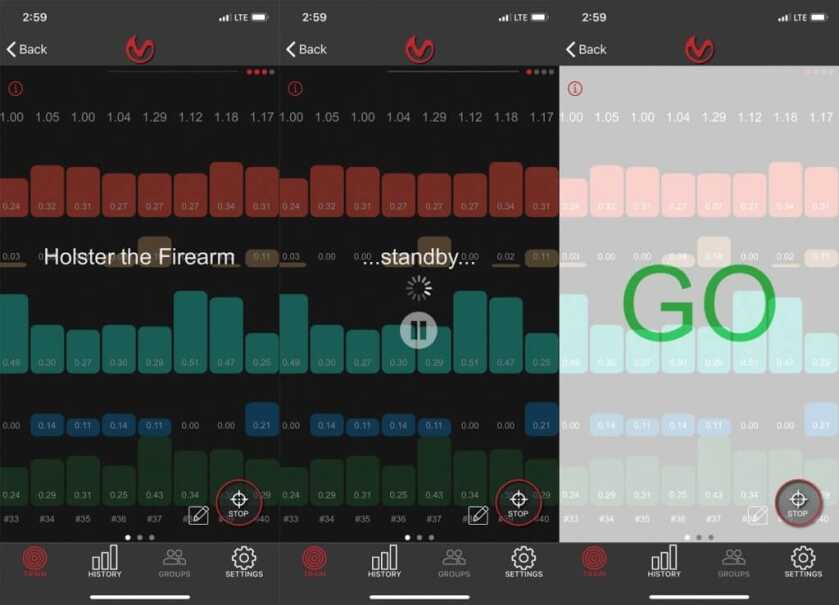
Holster Draw Analysis
This mode analyzes five steps of drawing and shooting: gripping the gun, pulling the gun from the holster, presenting the gun, getting sights on target, and pulling the trigger. The feedback shows your split times for each step, so you know if you are being consistent and where you could make up time if you wanted to try. There is also a screen that shows the trace of the path of the draw in color and all other draws of that session in light gray. This lets you see how consistent the shooter is during the motion of the draw.
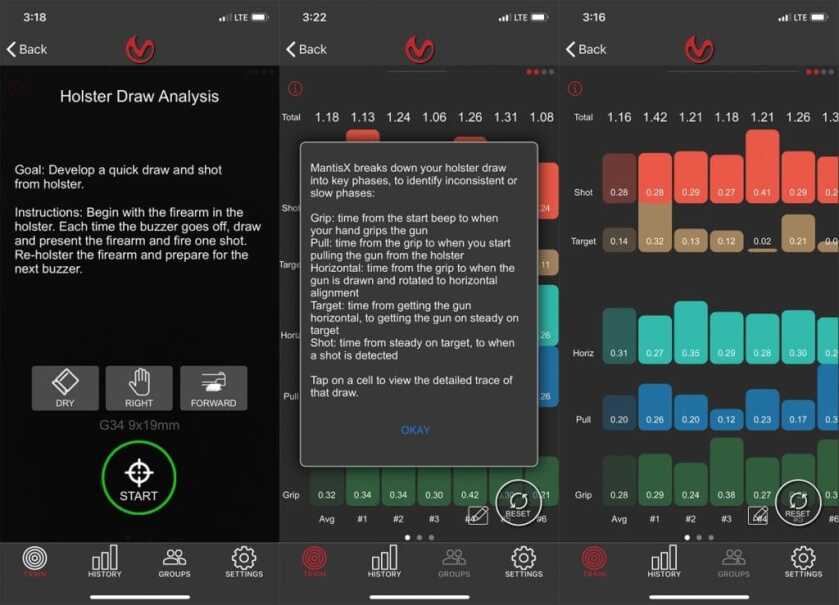
When using this mode it is very easy to see if you are getting lazy because it shows up in your splits, particularly in the time to get on the gun. What’s that old saying? Perfect practice prevents … something. The holster draw analysis mode definitely helps encourage perfect practice rather than just going through the motions. Other things that show up in the analysis are not getting a good purchase immediately and spending too much or too little time getting the sights steady on the target. The latter is something only the shooter would know by way of the sight picture and the split time for getting the gun on target (called “Target” in the app). In one session I had several 0.0 second splits for Target because I was compressing the trigger while presenting the gun. At full extension, the gun dryfired, so there was zero Target time. This is great as long as you are hitting the target, so experimenting with live fire on a target will be instructive.
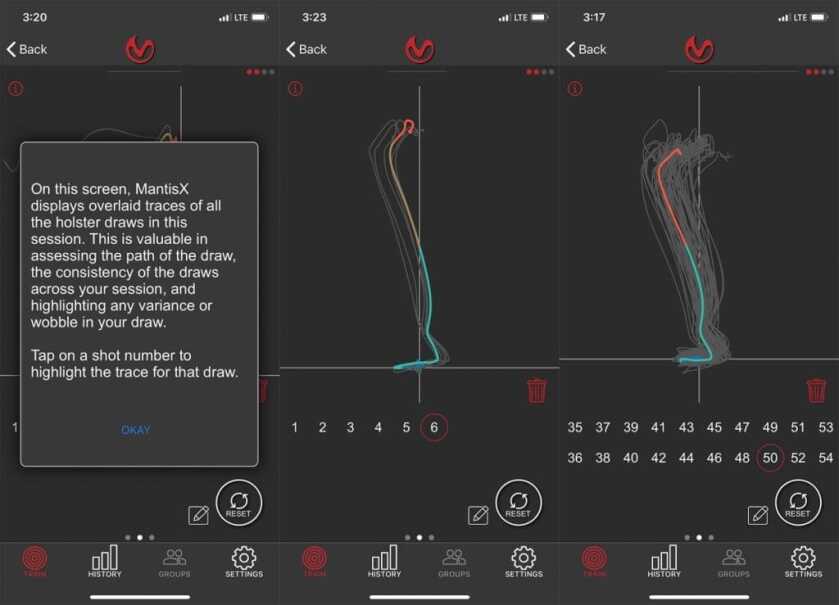
Science
When you think about all this little device does in such a small package the skeptic in you might ask “how do you know it’s doing what it says it is and not just faking it?” As mentioned above, I experimented with different grips and trigger pulls to see if the X10 could detect anything. During dry fire I deliberately tried to push the trigger to see if the device would tell me I was doing so. It did. During live fire I anticipated recoil (pushing down while pulling the trigger) and it told me I was doing that. Using the recoil analyzer I experimented with a regular grip, a loose grip, and light pressure from the support hand. This all showed up in the graphics of the X10. Clearly it was identifying differences, but I still couldn’t be sure it was accurately measuring those differences. So I talked to the people at Mantis to find out how they calibrated and tested their devices. The short answer is by using really expensive high-speed slow-motion cameras and other equipment. “It takes five hours to analyze video you shot on the X10 in five minutes” said Austin Allgaier from Mantis. “It’s tedious work, but necessary to ensure things are working the way they are supposed to.”
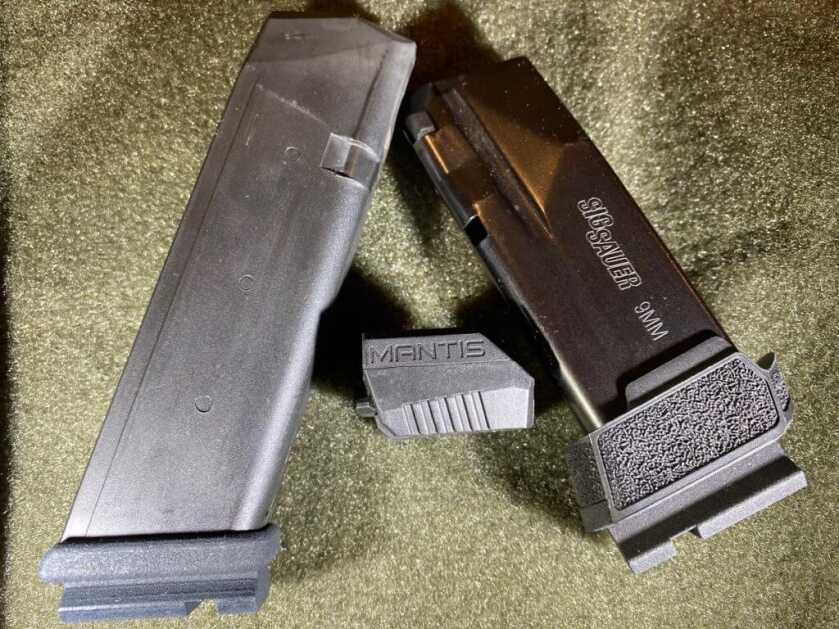
Having spent hours with the X10, I am completely convinced this thing does exactly what it is supposed to do. Through dryfire, live fire, holster drawing, and under recoil, the X10 knew what I was doing. It detected my movements, analyzed them, and presented the findings in meaningful and easy to understand graphs. This is a valuable type of feedback because practice is only helpful if you are practicing the right things. Whatever you practice – good form or bad form – will become your habit. Targets give shooters feedback too, but they don’t tell you why you are pulling your shots low, why you aren’t consistently accurate, or why your follow-up shot is what it is. The X10 gives you information that was formerly available only by having an expert watching over your shoulder. The X10 is an expert that fits in your pocket. The deeper I go into the rabbit hole the better the Mantis X10 wonderland seems to be.


Very interesting product. I will investigate this further.
The US marine Corps are used in a Mantis X 10 to train new recruits.